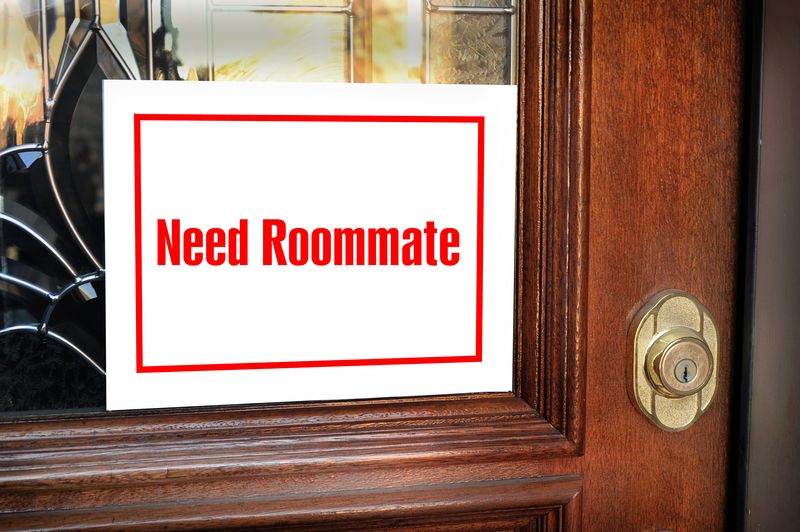Mastering the Art of Moving Your Bed and Mattress
Posted on 28/05/2025
Mastering the Art of Moving Your Bed and Mattress: The Ultimate Guide
Moving your bed and mattress can be one of the trickiest parts of any relocation. Due to their bulky nature and the critical role they play in your daily life, ensuring their safe and efficient transfer is vital. Whether you are moving across town, across the country, or even just rearranging your home, understanding the best practices for moving your mattress and bed frame is essential for comfort, hygiene, and peace of mind.
This comprehensive guide will help you master the art of moving your mattress and bed, offering practical tips, safety advice, and step-by-step instructions for a successful transition.
Why Properly Moving Your Mattress Matters
Your mattress is a significant investment--not only financially, but also for your health, comfort, and sleep quality. Improper handling can lead to:
- Damage to the mattress (tears, dents, sagging, or contamination by dirt and moisture)
- Injury due to improper lifting techniques or handling heavy bed frames
- Reduced lifespan of both the bed and mattress
- Potential pest infestation if the mattress comes into contact with outdoor surfaces
Moving your bed and mattress the right way will help you avoid these problems and ensure a smooth, stress-free relocation.

Preparation: What You Need Before Moving Your Bed and Mattress
Gather Required Tools and Materials
- Mattress bag or cover: Protects your mattress from dirt, moisture, and bugs during the move.
- Furniture sliders: Help in moving heavy bed frames without damaging floors.
- Moving straps: Provide extra leverage and support for carrying mattresses up stairs or around corners.
- Wrenches or screwdrivers: For disassembling the bed frame safely.
- Protective wraps or padding: For bed frames to prevent scratches and dents.
- Heavy-duty packing tape: Seals mattress bags and secures packing materials.
- Helpers: Never move a bed and mattress alone; get at least one or two people to assist.
Measure Everything
Before you start, ensure:
o Your mattress and bed frame can fit through doors and stairways at both your current and new locations.
o You have a clear path inside both residences, with tripping hazards removed.
Step-By-Step Guide: How to Move a Bed and Mattress Safely
1. Strip the Bed Completely
- Remove all bedding including sheets, pillows, comforters, and blankets.
- Launder and pack these items separately.
2. Disassemble the Bed Frame
- Take photos during disassembly to help with reassembly in your new home.
- Use a sturdy box or bag for screws, bolts, and small hardware. Label everything clearly!
- Cushion and wrap all headboard, footboard, slats, and side rails.
3. Protect and Pack the Mattress
Why use a mattress bag?
A specialized mattress cover or plastic bag will prevent stains, moisture damage, mites, and dirt from ruining your valuable sleep surface. Slide your mattress in and seal it shut with tape.
- Queen and king-size mattresses can be awkward. Tilt them sideways using two people and slide into the bag systematically.
- Roll the mattress if possible: Some memory foam mattresses can be rolled up--check manufacturer guidelines first!
- Box spring care: Treat and protect the box spring in the same way as the mattress.
4. Lifting and Maneuvering Techniques
- Bend your knees and lift with your legs, not your back.
- Take extra care when turning corners or navigating stairs; coordinate with your helpers.
- Keep the mattress vertical for easier handling in tight spaces.
- Use moving straps or harnesses for heavy or large mattresses to protect your back and get a better grip.
5. Loading Into a Vehicle
Type of vehicle: The best way to move a mattress is with a moving truck, cargo van, or pickup truck--never strap a mattress to the roof of a car, as it may damage the mattress or become a safety hazard.
- Lay the mattress flat in the truck if possible to avoid warping or damage.
- Secure it with straps or bungee cords to prevent shifting during transit.
- If space is constrained, the mattress can be on its side--but avoid sharp bends or stacking heavy objects on top.
6. Transporting Bed Frames and Headboards
- Protect all pieces with moving blankets or bubble wrap.
- Stand larger pieces upright against a wall inside the vehicle for stability.
- Avoid placing heavy items on top of delicate frame parts.
Best Practices for Moving Beds and Mattresses Up or Down Stairs
- Clear the path of all obstacles.
- Position one person above and one below the mattress or frame when going up or down stairs.
- Communicate clearly; coordinate every move and pause as needed.
- If possible, dismantle bulky frames further to make carrying easier.
Assembling Your Bed and Mattress in the New Home
- Clean the space: Before setting up, vacuum or wipe floors and check for dust or pests in the new room.
- Reassemble the bed frame: Refer to the photos and labeled hardware from disassembly. Don't force any connections--align everything gently.
- Inspect the mattress: Before placing it on the frame, check for signs of damage, dirt, or moisture. If the mattress was exposed to the elements, allow it to air out for a few hours.
- Place and secure: Once satisfied, position the mattress carefully, making sure it's straight and fully supported by the frame or box spring.
Mattress Care After Moving
- Allow the mattress to breathe; if stored in plastic, remove promptly to avoid moisture buildup or odors.
- Inspect for mold, pests, or deformities before first use.
- Consider a mattress protector for extra long-term cleanliness.
Special Considerations: Different Types of Mattresses and Bed Frames
Memory Foam and Latex Mattresses
- These are often heavier and more flexible than innerspring mattresses.
- Never fold or roll unless explicitly allowed by the manufacturer--permanent creases or cracks may occur.
- Avoid exposure to high heat or direct sunlight during transport.
Hybrid and Spring Mattresses
- Handle with care; try to keep them as flat as possible and avoid stacking.
- Box springs should be kept upright or on their side, but not twisted.
Adjustable Bed Frameworks
- Disassemble the adjustable mechanisms if possible according to the manual.
- Secure wires, motors, and remote controls safely in padded containers.
Professional Movers Vs. DIY: What's Best?
- DIY moving allows control and can be cost-effective, but requires physical effort and expertise--especially with king-size or specialty beds.
- Professional movers can manage large or delicate items with the right tools and insurance, often ensuring total peace of mind.
- Evaluate your budget, the size of your mattress, and physical limitations before making your choice.
Common Mistakes to Avoid When Moving a Mattress and Bed
- Not using a mattress cover: Even a short move can introduce dust, moisture, or pests.
- Forgetting to label hardware: Reassembly becomes a nightmare without correctly organized parts.
- Transporting mattresses incorrectly: Bending or strapping them on the roof can destroy internal structure.
- Moving alone: Lifting large mattresses without help risks both injury and property damage.
Bonus: How to Move a Bed and Mattress in Small Spaces
Urban apartments and tight stairways present unique challenges. Here's how to handle them:
- Measure doorways, hallways, and elevators before moving day.
- Remove doors from hinges temporarily if required.
- Disassemble to the smallest parts possible.
- If mattress flexibility allows, bend gently to maneuver, but avoid sharp folds.
A bit of creativity and patience can make even the toughest move manageable!

Essential Tips for a Smooth Moving Day
- Plan ahead: Start preparations a week before you move your mattress and bed frame.
- Dress appropriately: Wear gloves for grip and closed-toe shoes for protection.
- Eat and hydrate: Especially important during strenuous moving days!
- Review the weather forecast: Avoid moving mattresses on rainy or extremely humid days.
- Recruit reliable helpers: More hands mean easier, safer lifting and fewer accidents.
Conclusion: Sleep Easy After Mastering the Art of Moving Your Bed and Mattress
Mastering the art of moving your bed and mattress is about careful planning, proper preparation, and diligent execution. By following the steps and tips outlined in this guide, you'll protect your investment, your health, and your peace of mind during every move.
Remember -- your bed and mattress are your tools for rest and rejuvenation. Give them the attention they deserve on moving day, and you'll enjoy restful nights and a fresh start in your new home.
Share this guide with your friends and family for a stress-free moving experience, and don't forget to bookmark this page for your next transition!
Frequently Asked Questions
-
Can I leave my mattress in plastic for storage after moving?
No, remove the plastic cover after moving to avoid trapping moisture, which can lead to mold and odors. -
Is it safe to fold a memory foam mattress?
Only if the manufacturer advises that it's safe. Most innerspring and hybrid mattresses should not be folded. -
How can I clean my mattress after moving?
Spot clean with a fabric-safe solution and allow to dry completely before use. Use a mattress protector to prevent future stains.
For more tips on moving your bed and mattress efficiently and safely, subscribe to our relocation newsletter or consult with moving professionals today!
